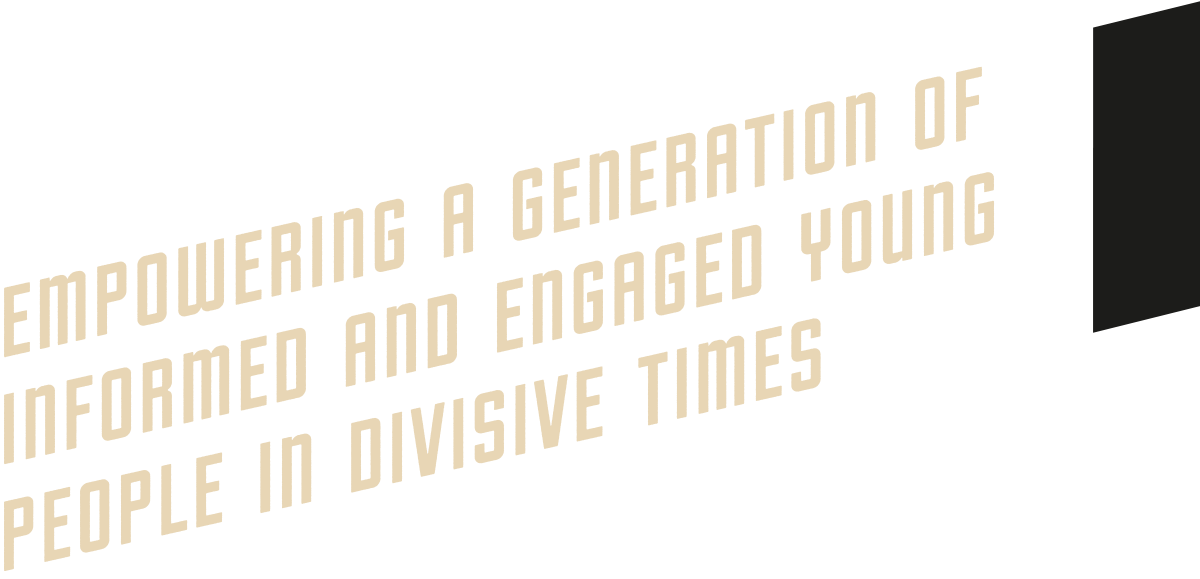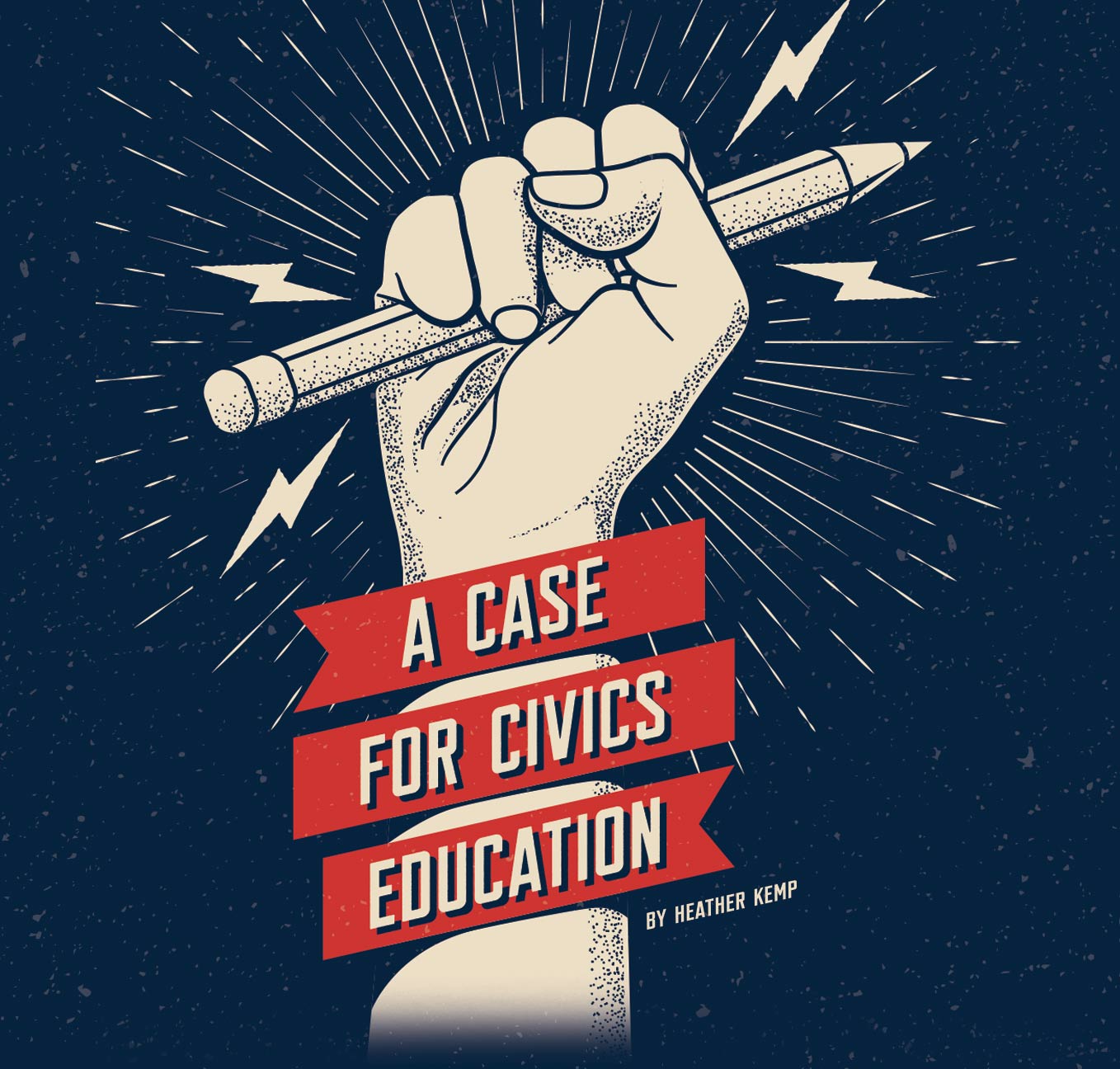

At a time when the country is greatly divided over topics like public health strategies and ethnic studies — and with misinformation running rampant — Patterson is a prime example of the kind of informed and active young citizen many local educational agencies are hoping to inspire through civics education. He had just left a Senate Education Committee hearing where Senate Bill 1236, proposed legislation allowing school boards the ability to give student board members full voting rights, passed through the committee 6-1 on a spring evening when he was interviewed for this article.


At a time when the country is greatly divided over topics like public health strategies and ethnic studies — and with misinformation running rampant — Patterson is a prime example of the kind of informed and active young citizen many local educational agencies are hoping to inspire through civics education. He had just left a Senate Education Committee hearing where Senate Bill 1236, proposed legislation allowing school boards the ability to give student board members full voting rights, passed through the committee 6-1 on a spring evening when he was interviewed for this article.
s the K-12 education system is one of — if not the first — governmental organization Americans interact with in their lifetime, Patterson sees great importance in being involved and advocating for his peers in Southern California and across the state. Helping all students find their voice and teaching them to use it in a civil, productive way may be more important than ever.
“Civics education is what’s going to allow our society to be successful,” Patterson said. “When people participate and understand what is going on in the government, that’s how we have a representative democracy. When we don’t provide civics education that models content knowledge and actual participation, we’re not going to be successful in ensuring a viable, equitable and diverse democracy.”
While civics education includes fundamental knowledge of how the U.S. government functions, key processes like voting, how it all affects day-to-day life and how students may become engaged, there can also be a focus on critical thinking and evaluating information.
“I think the biggest thing that we should be focusing on right now in civics education, beyond including students in the governance process, is making sure that students understand what the government does and are able to assess information and understand its bias and be able to contextualize it on a larger scale,” Patterson said.
As school board meetings continue to serve as a battle ground to debate hot-button issues, more expertise on assessing information could prove helpful in the future.
“I have, on average, anywhere from two to eight people per meeting who come to our school board and talk to us about how the Pfizer vaccine was created to get Anthony Fauci rich and how we’re being paid by Big Pharma,” Patterson explained. “That type of information is something that, if you had a solid education where you were learning and understanding how to evaluate a source of information and some of the merits that need to go into place to make that happen, you would begin to understand that those things don’t have validity.”
And, in spite of the polarization the United States is currently experiencing, a study — Do Politics in Our Democracy Prevent Schooling for Our Democracy? Civic Education in Highly Partisan Times — by researchers from Universities of California, Los Angeles and Riverside published in October found that “a school’s partisan context is unrelated to most supports for democratic education.”
The study was based on results from a 2018 national survey of public high school principals that looked at how political context, district priorities and the beliefs and characteristics of principals correlate with support for civics education.
Civically active principals and districts committed to civic priorities have the highest levels of support for civic education, according to the study. Researchers also found that districts identified as conservative are less likely to support discussions on controversial issues, which could hinder students’ ability to take part in conversations about sensitive subjects.
“At a time when school districts face highly contentious politics, these findings indicate that systemic district commitments can help strengthen our civic foundations and that principals and district leaders may be able to promote small-d [holding democratic views, not specifically a member of the Democratic party] democracy amid increasingly politicized school governance contexts,” researchers stated.

The district’s civics education accolades might be unmatched. In 2021, AUHSD had the most students in California receive the State Seal of Civic Engagement at graduation (the program honoring civic learning adopted by the State Board of Education in 2020).
According to Patino, the district also has more schools designated California Democracy Schools than any other district in the state with 17 of 20 schools earning the distinction — an effort led by the Los Angeles County Office of Education to “institutionalize civic learning in high schools to prepare ALL students for college, career, and citizenship in the 21st century.”
Additionally, AUHSD is home of the 2021 Golden Bell Award-winning Civic Leadership and Learning Institute, a program that supports civic learning by way of building teacher capacity to encourage student voice, purpose, agency and action.
Junior high and high school students are given chances in various classes to find issues that matter to them and go through a process that involves steps like framing inquiry questions, doing research and having conversations on controversial topics while learning it’s OK if not everyone agrees with your stance.
“A lot of what we’re trying to do is offer our students the opportunity to find something they’re passionate about, a local issue, and then give them the tools to figure out how to make change happen — culminating in reaching out to people in power,” Patino explained.
Politicians in the area are used to hearing from youth. Some issues Patino said students care about are homelessness, the environment, food deserts and short-term rentals (especially around Disneyland).
Students are taught that they have to offer solutions when seeking change and must be able to justify their points using sources, like credible data. They’re also taught that their efforts don’t necessarily mean they’ll get what they want on the first try.
“We want to empower them to know how to go and find this stuff out. Then the civic action is reaching out and getting your voice heard about why you want to make a change. That is a skill they will carry with them the rest of their life no matter what career or city they’re in,” Patino said, adding that they don’t want to raise young adults who have a fit when they don’t get what they want “because that’s not how change happens.”
Upstate, in Salinas Union HSD, a Civic Learning Plan is underway with leadership by the board of trustees. The document, with a timeline of 2021 to 2024, establishes guidance and direction that will have all students engaging civically in their schools and neighborhoods as well as the larger community via multiple pathways of civic learning, action and reflection, Board President Kristina Szaszy-Jones said.
“This plan aligns with the core values of SUHSD and seeks to forward our district’s established goals as outlined in the [Local Control and Accountability Plan],” Szaszy-Jones explained. The plan considered practices already in place as well as those that could be built and “identified areas of growth and development of civic learning opportunities from the classroom, school site, district and community.”
“Through civics education, students can acquire knowledge and form sound opinions about current issues that affect them and future generations, and in so doing can propagate positive solutions. With civics education, the world will become a better place; without it, it won’t,” Szaszy-Jones said.
Curriculum needs, professional development, site and district decision making, and community partnerships were identified and incorporated into the document, which lays out recommendations to facilitate the implementation of goals, including having all students graduate career and/or college ready; having all staff be highly qualified, trained and retained; and having all students experience education in safe, caring and healthy learning environments.
Efforts like these can be especially consequential in diverse locations.
“Monterey County’s demographic is unique in that some of the richest people live here and some of the poorest people live here. Salinas Union HSD is the largest school district in Monterey County, and almost 90 percent of the SUHSD’s students are socioeconomically disadvantaged. So, it is imperative that our students explicitly learn how to be active, engaged participants in democracy,” Szaszy-Jones said. “In doing so, they will contribute to their communities long after they finish school. They will be knowledgeable and concerned about current issues and events; they will know how to foster positive change; they will vote, they will run for office; they will be happy, healthy and productive citizens.”
“The report highlights the efforts of seven early adopters of the State Seal of Civic Engagement, including Salinas Union High School District, and provides themes and recommendations for educators interested in rolling out the SSCE in their own districts and schools,” Szaszy-Jones noted. “In addition, the report details the important role that students can play in the planning and implementation of the SSCE at the state, district and school level. With student voices at the center of the SSCE, districts and schools can effectively model democratic participation, skills and dispositions for young people.”
San Diego’s Patterson called the seal an optimal way to show students there are ways to get civically involved with a clear pathway. Ensuring that all California students have access to resources to participate is necessary, however, he said.
High schoolers in his area were participating in a challenge to get students 16 and older registered to vote at the time of this interview. Methodology should be a significant consideration when pursuing such endeavors, Patterson pointed out.
“When you put a stand out at lunch or a table, and say you bring the League of Women Voters onto school campuses, it oftentimes is not as effective as if you ask your history teacher to just say at the beginning of class ‘I’m going to give you 10 minutes. If you want to, and I encourage you, here’s how you preregister to vote,’ Patterson said. “That is absolutely the most effective way.”
Overall, taking the time to listen to students and offering them ways to participate in civics that matter to them are the best ways to garner interest.
Patterson sees students serving on advisory boards and school site councils and simply engaging as a citizen on campus and in the community. Those are typically older students though.
The Leader In Me, a San Diego USD program that incorporates the seven habits of highly effective people, is something Patterson is proud to have in his home district.
“One of the things we talk about is how can we create elementary schools where students really understand what it means to be a leader … We talk a lot about what those habits look like and how you can be effective.”
This is good preparation for leadership roles, Patterson said.
“People are starting to realize we don’t have to wait, we have a lot to learn, and we have a lot to teach others and we’re excited for what that looks like,” he said. “There’s no civics education when those delivering civics education believe that youth need to wait until tomorrow to be leaders. Leadership starts the day you teach someone to become a leader and, once you open that box, you can’t close it.”
Fresno USD is also getting some of its youngest students involved.
“One of the things we’re talking about is how do you implement civics education as young as we can. We traditionally think of that as high school thing, but we don’t want to be restricted to government class in senior year,” said the district’s Superintendent Bob Nelson. “We want you involved in civic-minded pursuits early.”
Creating life-long connections to the community is essential in Fresno, where young people often need to leave to pursue four-year college degrees.
“For us, part of civics education is helping students to love their own local neighborhood because we are reliant on collegiate kids coming back to the valley to live and serve here,” Nelson explained.
One way the district is getting younger students involved is through the Food to Share program. Despite its status as a major producer of agriculture, food insecurity is an issue in Fresno, Nelson said.
If elementary students don’t eat all of their school lunch, which they receive for free, students divide up their untouched leftovers, which are then distributed to nonprofits. “That’s practical civics for the valley and it makes the kids who get free lunch from us care as they realize that that food has value and that through their efforts, they can help curb problems in our community — and they take that super seriously,” Nelson said.
For students of all ages, Nelson said the district makes no attempt to “disabuse anybody’s political belief systems.” Instead, they’re trying to help young people recognize the contributions they can make in their communities.
Civics education in Fresno USD also puts a focus on respecting all viewpoints.
“I think it’s never been more important for us to nurture respectful, collaborative, across-the-aisle dialogue … I can’t raise a generation of kids who can’t have a conversation with somebody they don’t see eye to eye with,” Nelson said. “For democracy to thrive, you need to take an active part. It’s not a spectator sport … Work is not done in the hateful back and forth rhetoric between right and left. Actual work happens in the margins between people who can sit and collaborate with others who don’t necessarily see eye to eye with them.”
“Nobody needs to do this crucial work on their own. There are other people out there who are doing that work,” Nelson said. “It’s really at the forefront of public consciousness right now. Things like critical race theory — for good or for bad — have put it on everybody’s radar, but the goal is to leverage that political reality in order to talk about how to create centrist opportunities for people to learn.”

www.cde.ca.gov/pd/ca/hs/hssstateseal.
Los Angeles COE State Seal of Engagement resources
bit.ly/3cRx1gM
To learn more about Californians for Civic Learning, contact Michelle Herczog at
herczog_michelle@yahoo.com.
Heather Kemp is a staff writer for California Schools.